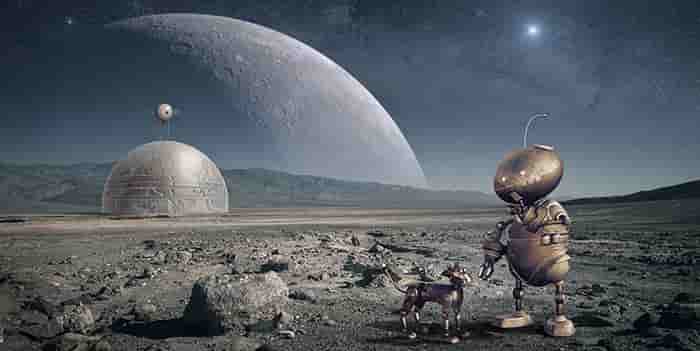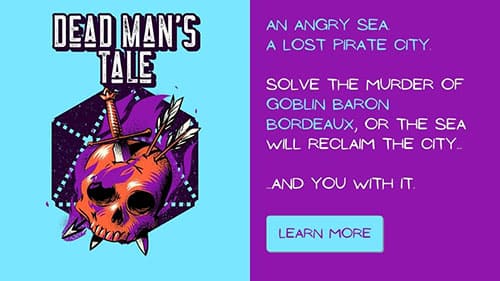Often, starting a sci fi short story can be daunting. Are you diving into an expansive, cosmic world? Tackling concepts that bend the mind? Like any story, there are techniques that bring your ideas down to earth and catch your reader/viewer.
Start a sci fi short story with these elements in mind:
- Make a strong intro sentence.
- Place setting with sensory perception.
- Use the MICE method to open conflict
- Start somewhere interesting in the story.
Make a strong intro sentence
Make a strong intro sentence to hook your reader as quickly as possible. People make quick judgements when deciding what to do with their time. If you want them to spend that time on your story, the first sentence needs to pop. Sometimes, this looks like the protagonist in action. Other times, it’s simply an eye-catching statement that relates to the story overall.
In science fiction, this is a good time to hook your reader with weird traits your about to present in your story.
A few famous sci fi introductory sentences include:
- It was a bright cold day in April, and the clocks were striking thirteen. —George Orwell, 1984 (1949)
- The sky above the port was the color of television, tuned to a dead channel. —William Gibson, Neuromancer(1984)
- Far out in the uncharted backwaters of the unfashionable end of the western spiral arm of the Galaxy lies a small, unregarded yellow sun. —Douglass Adams, The Hitchhiker’s Guide to the Galaxy (1978)
- All of this happened, more or less. –Kurt Vonnegut, Slaughterhouse-Five (1969)
Place setting with sensory perception.
Readers need a picture placed in their minds as soon as possible. Otherwise, they may drift away until anchored into your world. Plus, this will help show the story as opposed to telling it. As the old writing adage goes: Show, don’t tell.
Now that we have a setting in mind, we can bring it to life through sensory perception. However, we DON’T want to state: “Protagonist sees and hears things”. We want the reader to experience these sensations without a filter.
Consider this exercise. Place a scene using all five senses, one at a time.
- The night sky was painted in cosmic purples and blues.
- Thunder boomed outside the port window of the small ship.
- A sweet perfume filled the room as the mysterious client entered.
- Vibrations rippled across the earth as the massive locomotive entered town.
- Pizza at the space port was as cold and bitter as space itself.
Use the MICE method to open conflict
The MICE method stands for Milieu, Idea, Character and Event. Each of these story types can take place in a given work as characters grow and stories evolve.
Consider these common plot threads to open conflict—also known as the MICE method.
Milieu: The protagonist must move through or exit a setting. This type of story is about exploration and worldbuilding: Wizard of Oz, Alice in Wonderland, Gulliver’s Travels, Lord of the Rings are strong examples of this story type.
Idea: Otherwise known as investigation, this story conflict revolves around solving a mystery. Intriguing mystery can be a powerful tool for launching readers into your story. However, this doesn’t mean the protagonist as to be a detective. Maybe a spaceship captain is getting strange readings on his or her ship, only to find a stowaway alien monster.
Character: A character story is about internal growth or change within the protagonist. Consider how the story affects your protagonist and what insight (or delusion) they gain from the actions they make. Therefore, the reader can watch the character go from one internal state to another. Maybe the tragic hero becomes heartbroken and seeks revenge, only to fall prey to his own rage. Or maybe a petty thief is pushed to act heroically in the face of something catastrophic.
Event: Event stories happen when the status quo is upset. An alien invasion, unleashed monster or cataclysmic disaster are all examples of event stories. The protagonist must adapt to the new conditions and is motivated to return to normal.
Related Posts:
Guide to Building an Operative: Starfinder
| Build a Ysoki Mechanic Character: Starfinder
|
Start somewhere interesting in the story.
Sometimes, we get into our story and have a realization—it feels slow and loaded with information. The first part is boring, like we’re explaining extra detail without getting to the point. Sure, events happen in chronological order. However, we don’t have to start at the beginning of this chronology. We can always bring in background details later in the story.
Active drama pulls the reader into the story. It’s exciting and entices curiosity. However, we need to remember that peeks also have valleys—where the drama calms down for worldbuilding or information gathering. Therefore, we can plant backstory in as the active drama calms down, setting us up for the next piece of active conflict with a clearer picture in mind.
For example: start at the point where Johnny is running from the gangsters, not the point where he makes the bad decision to do business with them.
To Sum it Up
Sci fi is a genre full of deep thought, extraordinary worlds and strange possibilities. However, we should always remember the basics of good storytelling. The craft of gaining and keeping the reader engaged in the active story is just as important as the setting and ideas presented.




